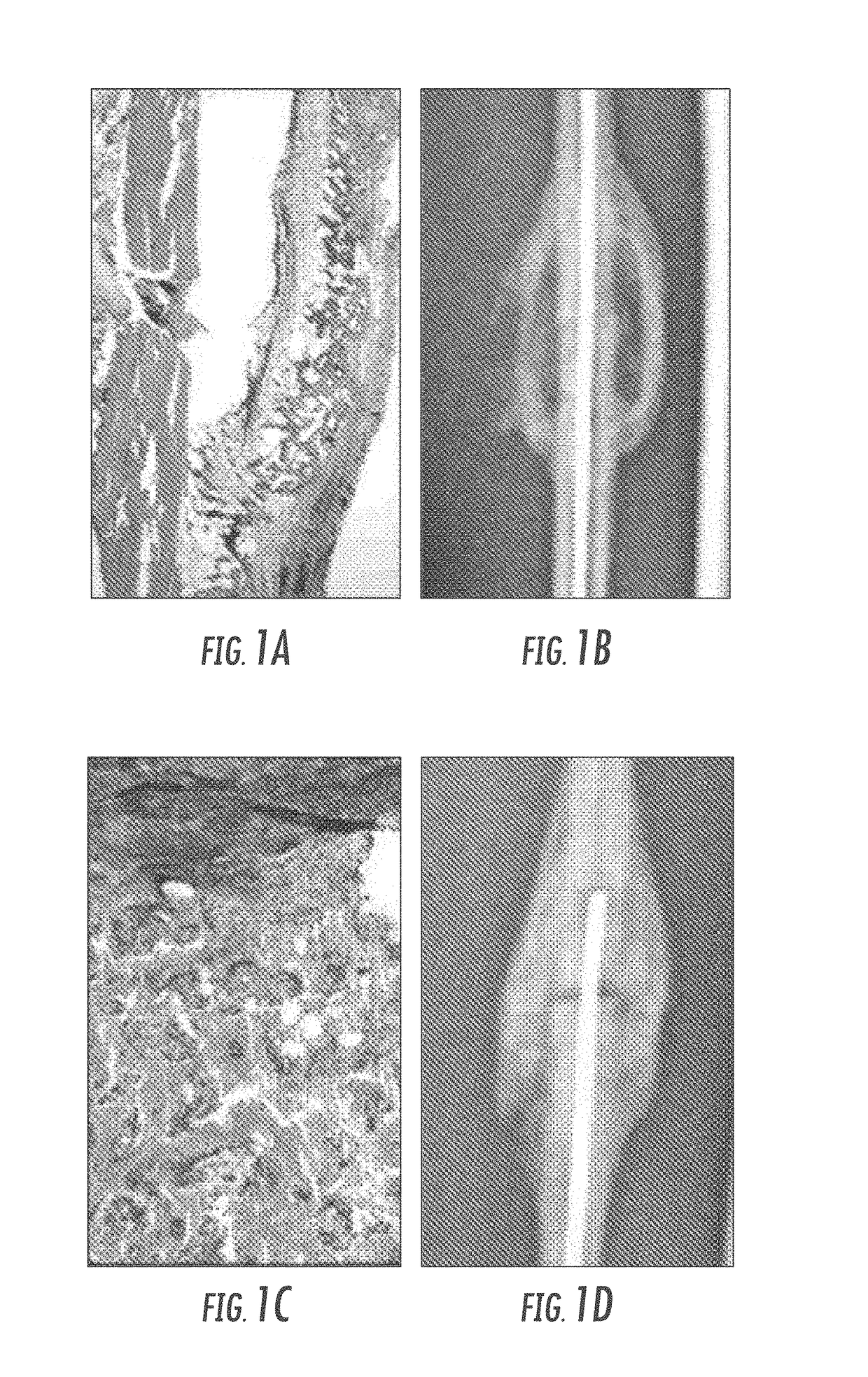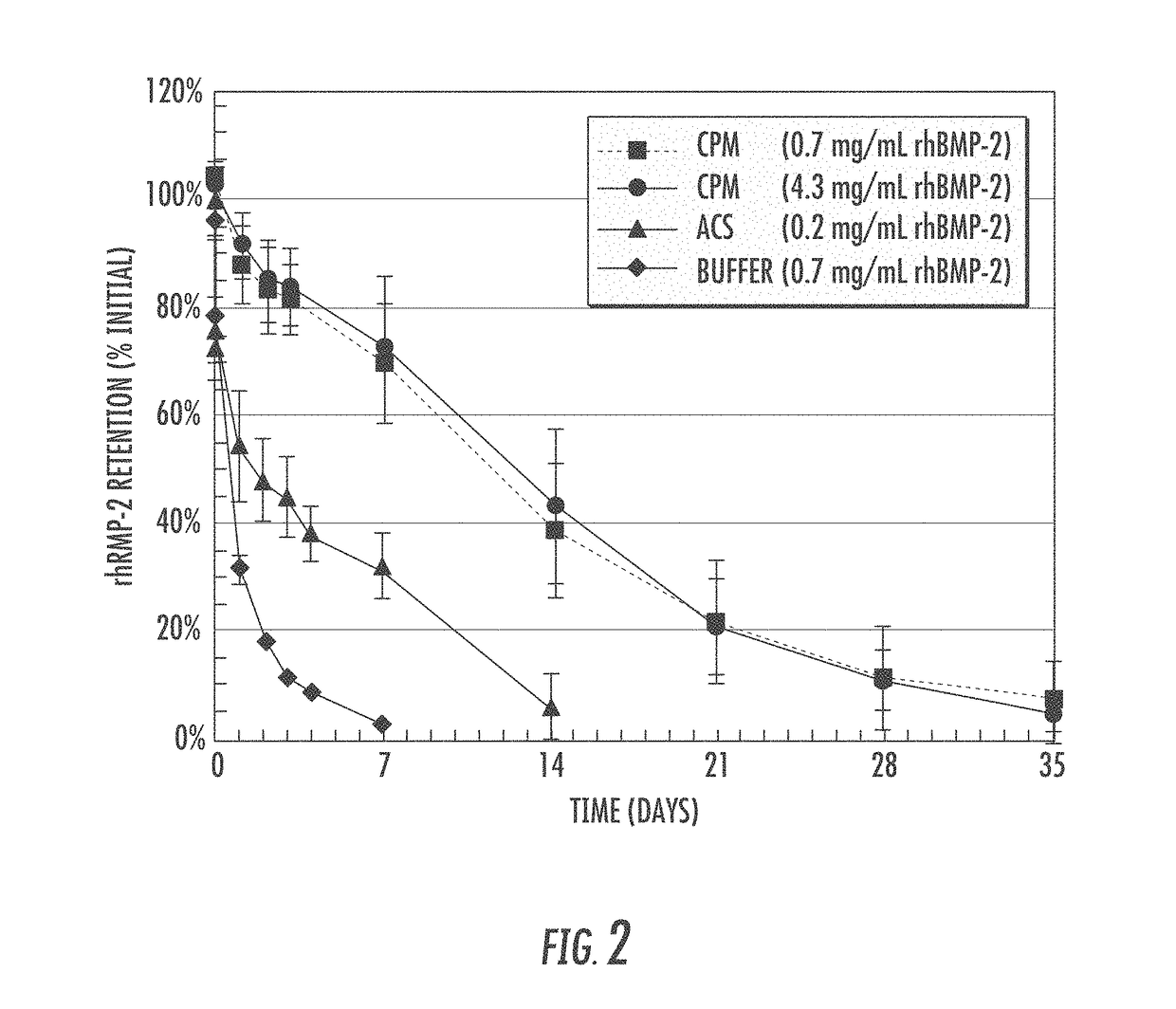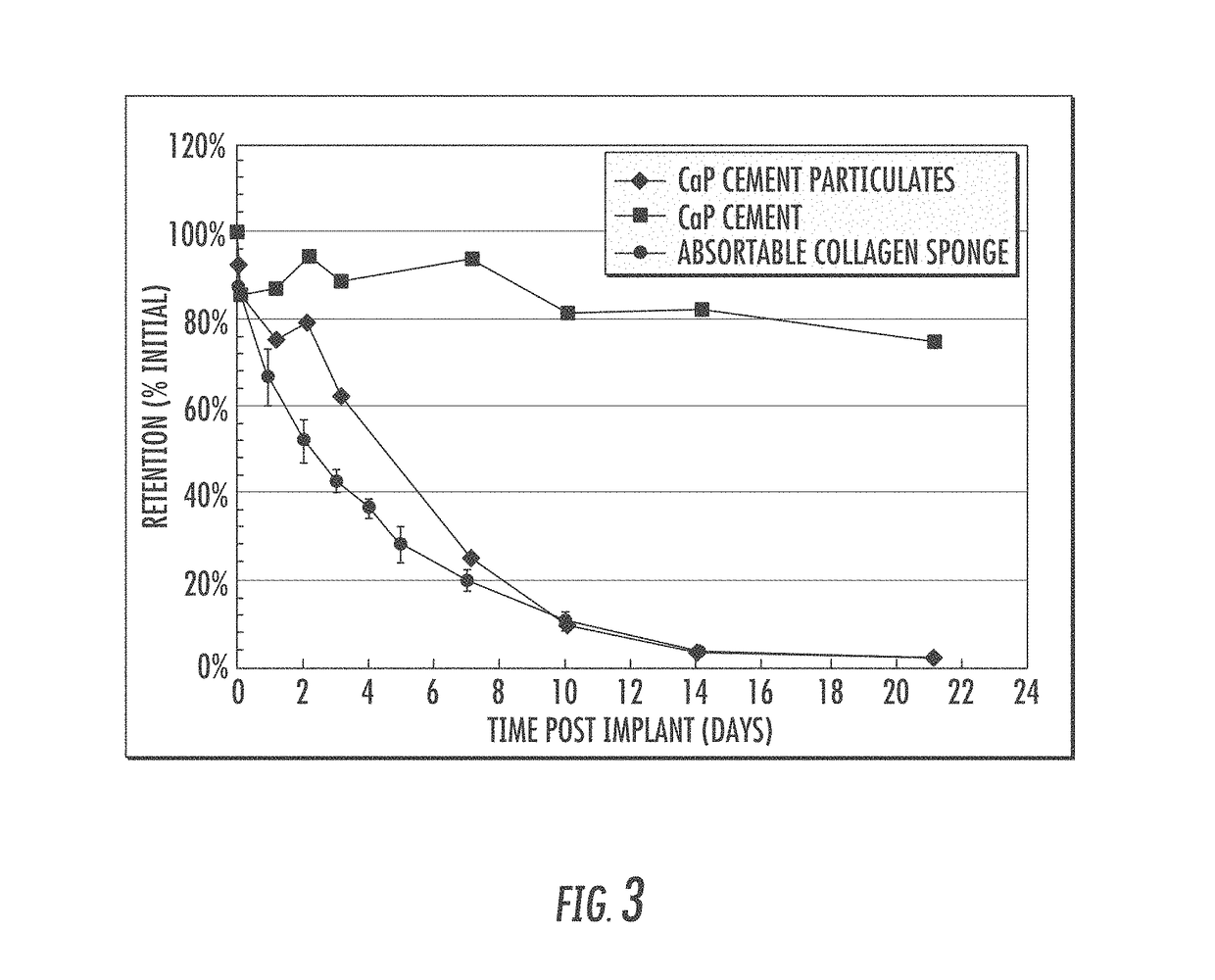Matrix for enhanced delivery of osteoinductive molecules in bone repair
a technology of osteoinductive molecules and matrix, which is applied in the field of bone cements, bone putties and granulebinder composites, can solve the problems of limited supply of autografts, less ideal materials than autografts, and efficient incorporation of osteoinductive materials, and achieves sufficient column strength and improved elution of osteoinductive proteins.
- Summary
- Abstract
- Description
- Claims
- Application Information
AI Technical Summary
Benefits of technology
Problems solved by technology
Method used
Image
Examples
Embodiment Construction
Osteoinductive Compositions
[0019]Synthetic bone grafts (also referred to interchangeably as “implants” or “constructs”) utilizing the compositions of the invention generally include three components: an osteoconductive material, such as a calcium ceramic or other solid mineral body, an osteoinductive material such as a bone morphogenetic protein, and a biocompatible matrix such as a collagen sponge. As used herein, osteoconductive materials refer to any material which facilitates the ingrowth or ongrowth of osteoblastic cells including osteoblasts, pre-osteoblasts, osteoprogenitor cells, mesenchymal stem cells and other cells which are capable of differentiating into or otherwise promoting the development of cells that synthesize and / or maintain skeletal tissue. In preferred embodiments of the present invention, the osteoconductive material is a granule comprising an osteoconductive calcium phosphate ceramic that is adapted to provide sustained release of an osteoinductive substance...
PUM
| Property | Measurement | Unit |
|---|---|---|
| Length | aaaaa | aaaaa |
| Length | aaaaa | aaaaa |
| Length | aaaaa | aaaaa |
Abstract
Description
Claims
Application Information
 Login to View More
Login to View More - R&D
- Intellectual Property
- Life Sciences
- Materials
- Tech Scout
- Unparalleled Data Quality
- Higher Quality Content
- 60% Fewer Hallucinations
Browse by: Latest US Patents, China's latest patents, Technical Efficacy Thesaurus, Application Domain, Technology Topic, Popular Technical Reports.
© 2025 PatSnap. All rights reserved.Legal|Privacy policy|Modern Slavery Act Transparency Statement|Sitemap|About US| Contact US: help@patsnap.com



